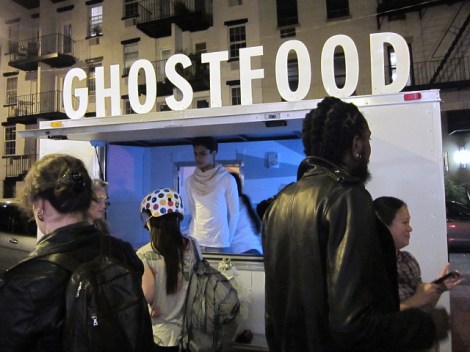What will eating be like after climate change destroys all our favorite foods? You can get a glimpse with the GhostFood truck, an art installation by Miriam Simun and Miriam Songster that lets you experience what it might be like to eat simulated cod, chocolate, and peanut butter once those foods are wiped off the map.
When you buy a snack from GhostFood, you’re fitted with a 3D-printed apparatus that delivers the smell of your chosen food right into your nose. What you put in your mouth is an algae-based protein meant to mimic the texture and mouthfeel of peanut butter, chocolate milk, or battered fish sticks. The combination lets you feel like you’re eating the real thing — or at least, close enough to fool our deprived descendants who don’t know any better.
According to the Verge, which sampled GhostFood’s fare, it’s not quite good enough for those of us who know what food really tastes like:
I pushed the bud a little closer to my nose and bit in. On its own, the protein tasted like soggy tofu tempura — not great, but it’s hard to screw up deep-frying. With the scent bud, though, it became a strange parody of real fish. The texture was all wrong, chewy rather than flaky, but the scent was unmistakably aquatic. Combining the two required some mental work that ultimately made the experience more nauseating than delicious.It’s not fish, something kept whispering. It’s chemically fish-flavored algae. Beside me, someone else described the chocolate milk as being palatable but far too sweet.
But hey, at some point, something like this may be our only option — not just for cod and cacao and PBJ, but also for wine, bacon, bourbon, oysters, and coffee. Get used to chewy algae with fish scent, is what I’m saying.






